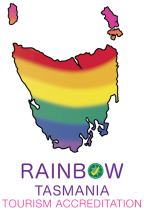Explore Maria Island
Maria Island National Park
Imagine an isolated island with beautiful beaches, abundant wildlife, fascinating history – stretching from millennia-old indigenous occupation to convict settlement worthy of World Heritage listing – and you’ve summed up Maria. Plus: seriously, how many national parks in Australia let you stay in a former convict penitentiary that dates back to 1830?
Jump To...
Staying at Maria
Access to Maria is provided by a ferry service that runs between Triabunna and Darlington. The crossing takes about an hour. A short walk from the Darlington wharf, the old penitentiary includes 10 rooms, most with six bunks. The penitentiary was built in 1830 and has been altered throughout its history – for instance, the sun-soaked verandah so beloved of modern-day visitors was added in the 1920s. The original penitentiary steps remain under the verandah (four doors from the left as you look at the building). Talk about sleeping in history…
The rooms provide low cost, basic accommodation. The bunks have mattresses and there’s a wood heater (wood supplied), table and benches. There’s electricity and gas cooking rings (not ovens) in the nearby Mess Hall, which also contains tables and benches. For all other services visitors must be self-reliant. There are toilet facilities near the penitentiary and coin-operated showers in the amenities block at the nearby Darlington camping ground.
Penitentiary users need to take their own bedding (sleeping bags), all cooking and eating equipment and provisions, and head torches or lamps.
Our Maria Island Pack includes all the kitchen/eating and lighting basics you need in one convenient package, and we can supply all your provisions – simply choose from our Gourmet menu. We also hire sleeping bags, plus raincoats, daypacks, rucksacks, walking poles and various other things that you might need to explore Maria’s many short (and longer) walks.
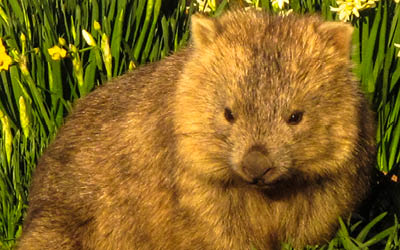
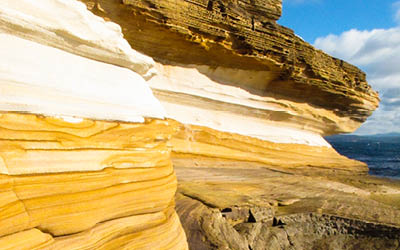
More About The Park
Maria Island’s history extends for millennia, from the time Aboriginal people paddled canoes to the island they called wukaluwikiwayna, through the era of European voyages of discovery (including Abel Tasman, in 1642, who named the island for Maria Van Diemen, the wife of the governor of Batavia; and French explorer Nicolas Baudin’s 1802 expedition – source of Maria’s many French names).
Maria had two eras as a convict settlement in the 19th century and later industrial and agricultural periods. Although some of Darlington’s best known buildings (the Commissariat Store; the Penitentiary) date from Maria’s 1825–1832 first convict period, the area made the World Heritage list for its 1842–1850 probation station era, when inmates included Maori resistance fighters and most famously William Smith O’Brien, leader of the 1848 Young Ireland rebellion. Convicts were sent to Darlington and other probation stations for reform through work, education and religious instruction, but the system was expensive and fairly quickly abandoned.
To learn more about Maria’s history visit the Tasmania Parks and Wildlife Service (PWS) website here.
Why Should I Go?
Maria’s most noticeable attraction is wildlife. The island was de-stocked in the 1960s and turned into a conservation reserve (declared a national park in 1972) and a number of threatened species were introduced. Pademelons and echidnas were already island natives; threatened species such as forester (eastern grey) kangaroos, Flinders Island wombats, Bennetts wallabies, Cape Barren geese, Tasmanian native hens and more recently Tasmanian devils have been introduced. All three species of Tasmanian snakes are found here and a good variety of birds (BirdLife International has named Maria an Important Bird Area). You’ll see many island animals cruising around Darlington by day, and it’s definitely worth looking for devils at night. About 25–30 devils were introduced in 2012/13, and they’ve bred up to about 100.
The waters around north-eastern Maria Island were declared in 1991 as a marine nature reserve to protect the region’s special ocean life, which includes visiting fur seals and whales. Most of the reserve, including waters immediately offshore at Darlington Bay beach, are a no-fishing zone, and you can see some marine life close-up when snorkelling or even wading. Tasmania Parks and Wildlife (PWS) reckons that some of the fish “are as readily observed as the wildlife around Darlington”.


Two wheels good, four wheels bad…
Maria was primarily used as agricultural land for much of the 20th century and most of its major trails started out as vehicular tracks, which makes the island perfect for mountain biking. The riding is generally quite survivable, with the odd sandy patch. There are no public cars here (PWS operates a few vehicles for maintenance purposes, so it’s a cyclists dream).
Bikes are available to hire from the ferry operators, who will also take your own two-wheeler across to the island for a fee.
What can I do that’s fun on Maria?
Cycle to Return Point
Pedal south on the ‘coast road’, stopping to explore various beaches and headlands en route to Return Point, a great place for a cruisy picnic lunch. It’s also a place where we’ve seen wombats graze collegiately in daylight, in the manner of a herd of cows. Only on Maria.
On the way home, stop near Four Mile Beach to scan the white gums for rare and endangered forty-spotted pardalotes.
Climb Bishop and Clerk
The mountain’s said to be so named because it resembles a bishop wearing a mitre, with a lesser clergyman in tow. Up near the summit occur pockets of plant species more usually associated with Tasmania’s temperate rainforests.
Starting from the Darlington settlement, the walk – uphill all the way – at first follows island tracks and the clifftop above Fossil Bay before entering mixed native forest for a couple of kilometres. Towards the top it crisscrosses a dolerite scree field, and the final section includes some steep (but not too exposed) scrambling. The summit (620m) atop dolerite pillars is exposed, and periodically enveloped in cloud or mist. Views north extend to Schouten Island and Freycinet Peninsula.
Fossil Cliffs – meet the (Permian) parents
Maria’s 290–250 million-year-old fossil beds are said to be among the world’s best examples of Permian deposits. Near Cape Boullanger, the dark alternating beds of fossil-rich limestone and siltstone are more than 15m thick. The predominant rock star here is the thick-shelled clam Eurydesma, and other fossils include sea fans, various coral-like creatures, scallop shells and sea lilies. It’s a leisurely walk that also passes various bits of human history from the convict and later eras, including Maria’s cemetery, which includes burials dating back to 1825 and the 1847 gravesite of lesser Maori chief Hohepa Te Umuroa, who scored a legally dubious free trip to Tasmania from NZ for ‘rebellion’. After Te Umuroa’s death, the four Maori prisoners remaining at Darlington were returned to NZ. Elders of Te Umuroa’s tribe took his remains home and reburied him (on 8/8/1988) at Jerusalem, on the Whanganui River, North Island.
Painted Cliffs
The island is renowned for the variety of geological ages on show, including the Triassic-era (ca 250–200 mya) sandstone at the Painted Cliffs. Sandstone’s hardly a rare material, but the Painted Cliffs are unusually beautifully eroded and patterned. The staining processes include groundwater percolating through the sandstone beds and leaving traces of iron oxides. The formation’s distinctive weathering patterns are caused both by wave action and sea spray crystalising into salt, the latter of which creates the honeycomb effect.
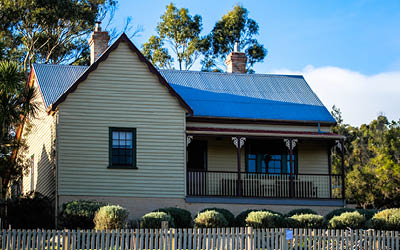
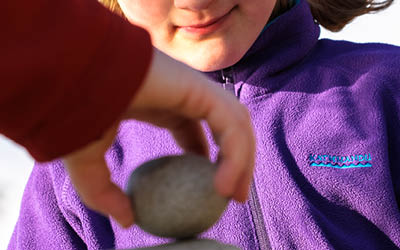
Suggested gear list for a 4-day stay:
- Comfortable hiking/walking shoes
- Waterproof raincoat
- Quick drying shorts or trousers
- Quick drying long sleeved shirt
- Outdoor socks x 4
- head torch with spare batteries
- Long-sleeved fleece or wool jumper
- Broad-brimmed hat
- Comfortable clothes for around camp
- Sunscreen
- Sunglasses
- Warm gloves
- Headband/beanie
- Water bottle
- Spare shoes for at camp
- Complete change of clothes in case of wet weather
- Camera chargers/spare batteries
Optional:
- Walking pole/s
- Swimmers
- Snorkelling gear
- Bicycle
- Chandelier (mood lighting, right?)
Practical stuff
For more information about Maria Island visit the Tasmania Parks and Wildlife Service (PWS) website here or call the Maria PWS office on 03 6257 1420.
To buy a parks pass (essential if you’re visiting a Tasmanian national park) visit the PWS website here or call 1300 827 727.
For information about Maria Island ferry fares and schedule visit Encounter Maria or call the Triabunna Visitor Information Centre on 03 6256 4772.
To book Maria penitentiary accommodation, click through to Book Easy from the PWS website here (http://www.parks.tas.gov.au/index.aspx?base=412#ma), or call the Triabunna Visitor Information Centre on 03 6256 4772.

Jump To...

34 Forest Road
West Hobart TAS 7000,
AUSTRALIA
PHONE: 03 6234 4918
MOBILE: 0468 343 244
EMAIL: info@3cgg.com.au
 Gluten Free
Gluten Free Vegetarian
Vegetarian Vegan
Vegan
